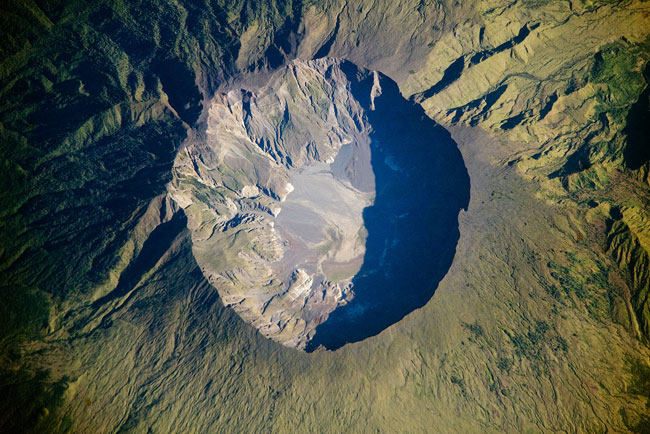This Volcano Is Quiet Now, But …

On April 10, 1815, the Tambora Volcano in Indonesia produced the largest eruption in modern history. An estimated 150 cubic kilometers of tephra — exploded rock and ash — were hurled into the air, with ash from the eruption falling at least 800 miles (1,300 kilometers) away to the northwest.
Enough ash was put into the atmosphere to reduce the amount of sunlight on the Earth’s surface and cause global cooling, resulting in the 1816 “year without a summer.”
This new photograph, taken by astronauts on the International Space Station, shows the summit caldera of the volcano. The huge caldera — 10 miles (6 km) in diameter and 3,600 feet (1,100 meters) deep — formed when Tambora’s estimated 4,000-meter-high peak was removed, and the magma chamber below emptied during the eruption.
Today the crater floor is occupied by an ephemeral freshwater lake, recent sedimentary deposits, and minor lava flows and domes emplaced during the nineteenth and twentieth centuries. Layered tephra deposits are visible along the northwestern crater rim. Active fumaroles, or steam vents, still exist in the caldera.
In 2004, scientists discovered the remains of a village, and two adults buried under approximately 10 feet (3 meters) of ash in a gully on Tambora’s flank — remnants of the former Kingdom of Tambora preserved by the 1815 eruption that destroyed it. The similarity of the Tambora remains to those associated with the AD 79 eruption of Mount Vesuvius has led to the Tambora site’s description as “the Pompeii of the East.”
The photo was taken earlier this year and released yesterday.
- Volcano News & Information
Get the world’s most fascinating discoveries delivered straight to your inbox.



